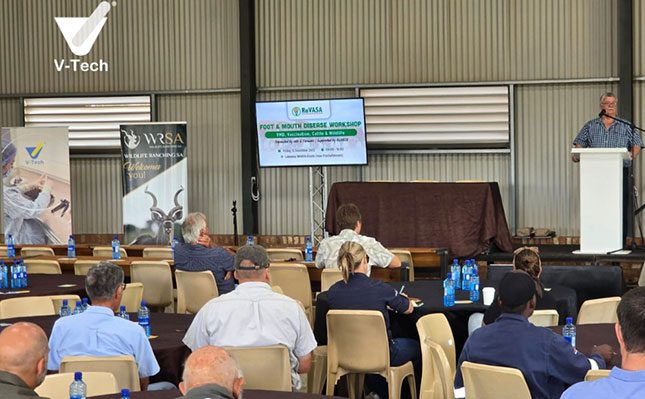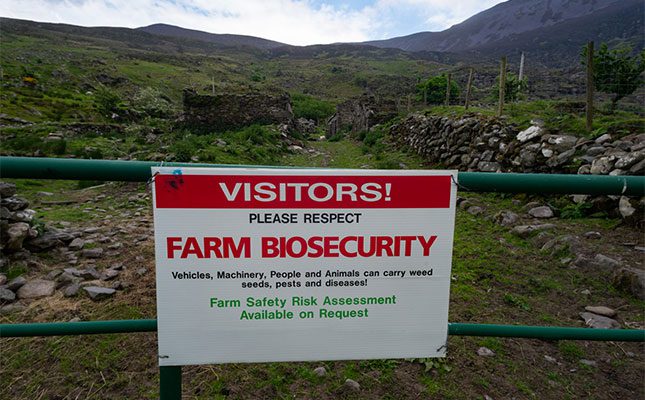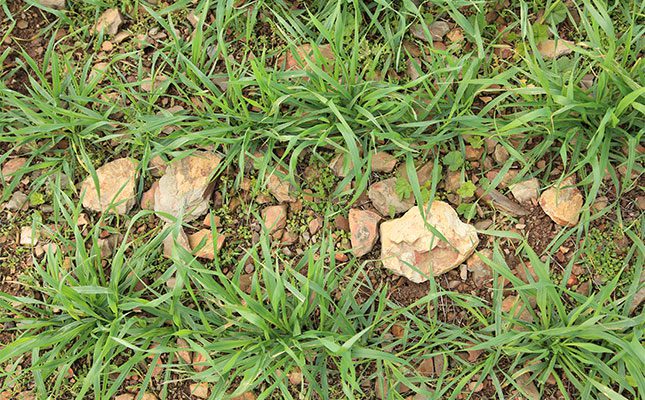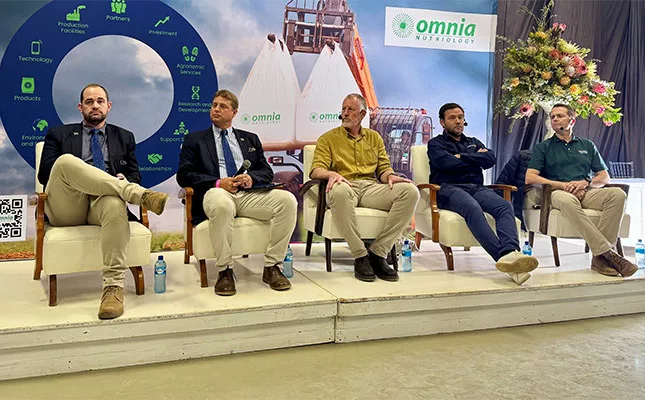
Photo: Magda du Toit
During a Nation in Conversation panel discussion this morning at Nampo, the need for investment in rural infrastructure, such as roads, water systems, and reliable energy sources, was under the spotlight.
The panel, facilitated by Lourensa Eckard, included:
- Moshe Motlohi, CEO of Transnet Rail Infrastructure Manager (TRIM);
- Theo Boshoff, CEO of Agbiz;
- Marlize Nel-Verwey, Free State provincial manager at the South African National Roads Agency (Sanral); and
- Dr Hubert Joynt, programme manager of the Centre of Excellence at Infrastructure South Africa (ISA).

and Dr Hubert Joynt, Programme Manager of the Centre of Excellence at Infrastructure South Africa (ISA). Photo: Magda du Toit
According to Boshoff, the agriculture sector was impacted by many different levels of infrastructural development, such as water, energy, roads, and rail, and any challenges experienced with the relevant infrastructure could lead to a loss of productivity. The opposite was also true, he pointed out, saying that if South Africa increased its investment in rail and water systems, productivity could increase.
He added that the blame for many late deliveries or problems at delivery points were the result of a lack of facilities and congestion at harbours. Investment at these facilities, however, could minimise delays and ensure timely delivery.
He further said that the transport differential was extremely high, and had a major impact on the grain industry.
“Most of the processors are situated in the urban areas, while the grain in produced 200km to 300km away,” Boshoff said.
“The cost of transport is such that it is cheaper for the processors and the feed industry to import soya bean from South America, instead of procuring soya bean from farmers in the central production areas of South Africa.”
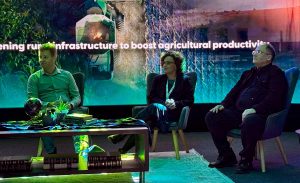
Road network crucial for moving produce
With regard to the road network, Boshoff pointed out that an efficient transportation network was crucial for moving produce from farms to markets or processing facilities.
He added that while farmers invested in reliable machinery and vehicles like trucks, trailers, and refrigerated vans that were essential for preserving crop quality during transit, many of these efforts were in vain due to the appalling conditions of South Africa’s rural road network.
According to Nel-Verwey, Sanral was involved in many projects, but that from the initiation of a project, it could take up to eight years before completion.
“The planning and costing can take two years, thereafter the design part can take another three years with the actual construction another three years.”
She also pointed out that for each road project, however small, environmental impact studies needed to be conducted.
She further said that delays in road projects were not necessarily due to planning problems, but more often a case of insufficient funding.
According to Joynt, various measures had been taken to increase infrastructure investment, including the creation of the Budget Facility for Infrastructure (BFI), the establishment of Infrastructure South Africa (ISA) and the R100 billion Infrastructure Fund, as well as the revision of the PPP-framework.
Public-private partnerships needed to restore rail network
Restoring the rail network was one of the opportunities ripe for private investment, Joynt said.
Increasing both private and public sector investment had been a strategy employed by government to stimulate economic growth.
“The role of public-private partnerships is becoming even more important [as] they create opportunities for investment on various levels. The country is open for investment,” Joynt said.

